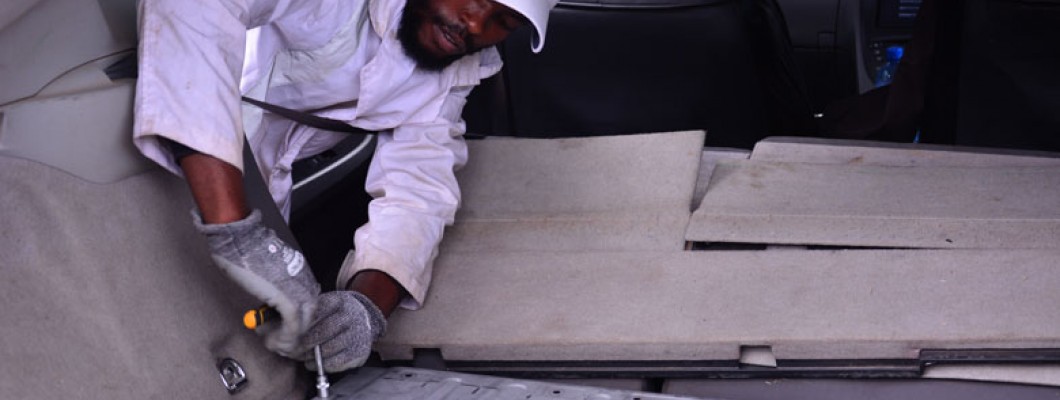
Hybrid battery packs have 28 to 40 NiMH modules assembled in series. A Prius, aqua, feilder, axio etc type prismatic module consists of six individual NiMH cells (1.2 V each) assembled in series.
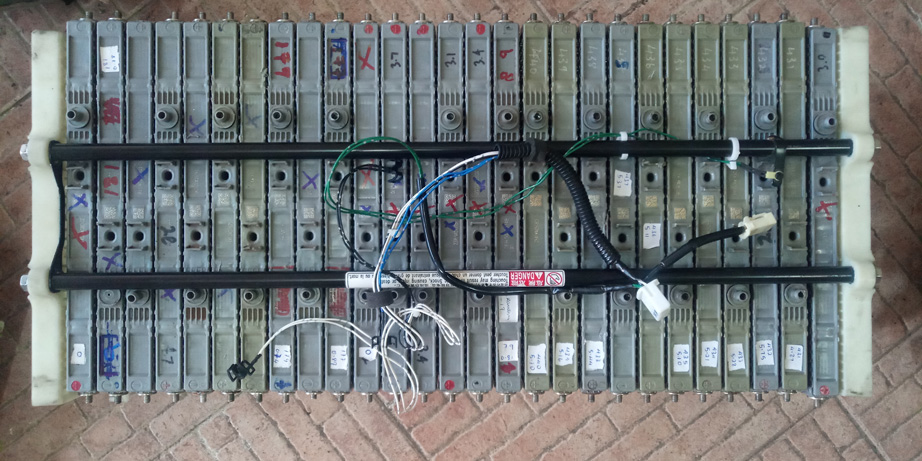
28 prismatic modules with a series nominal voltage of 202 V
NiMH modules are configured in series for high voltage hybrid vehicle battery packs. These packs undergo shallow depth-of-discharge (about 10%): They are for power assist, not electric drive. Unused electrode material undergoes structural changes that effectively reduces amp hour (Ah) capacity. This reversible failure mode (“memory effect”) takes modules out-of-balance with neighboring modules, especially those that are near the center of the pack. Out-of-balance modules undergo cell voltage reversal during discharge. Voltage reversal can permanently damage a module. High-rate charging generates gaseous oxygen at the positive nickel oxyhydroxide electrode that can pressurize and rupture the module. Modules, reconditioned by a series of deep charge-discharge cycles with tapered currents, will recover lost capacity and have extended lifetime. Hybrid vehicle batteries that have overheated may have vented electrolyte water. This permanent failure mode increases the module internal resistance. Such modules substantially increase reconditioning time. Modules suffering from permanent failure modes are identified and removed before full reconditioning.
After Carefully removing the battery pack from the vehicle, we connect it to our diagnostic / repair machine. The process may take a week or so to complete. In the mean time we will offer your an alternative pack so that the customer remain motorable during this time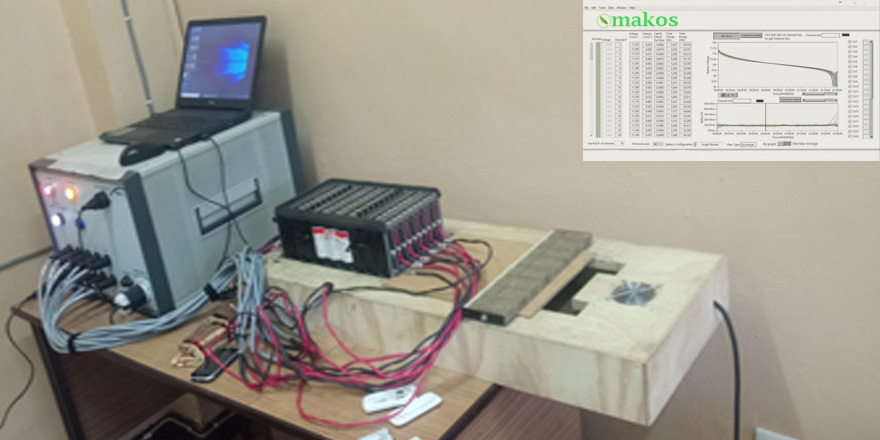

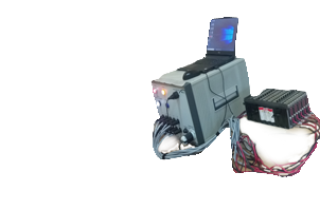
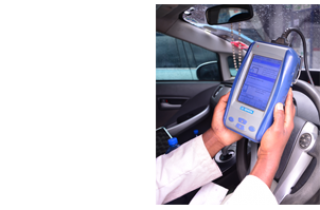









6 Comment(s)
Thanks for sharing this amazing content. Your information is really very outstanding to read.
1
1
1
1
1
Leave a Comment